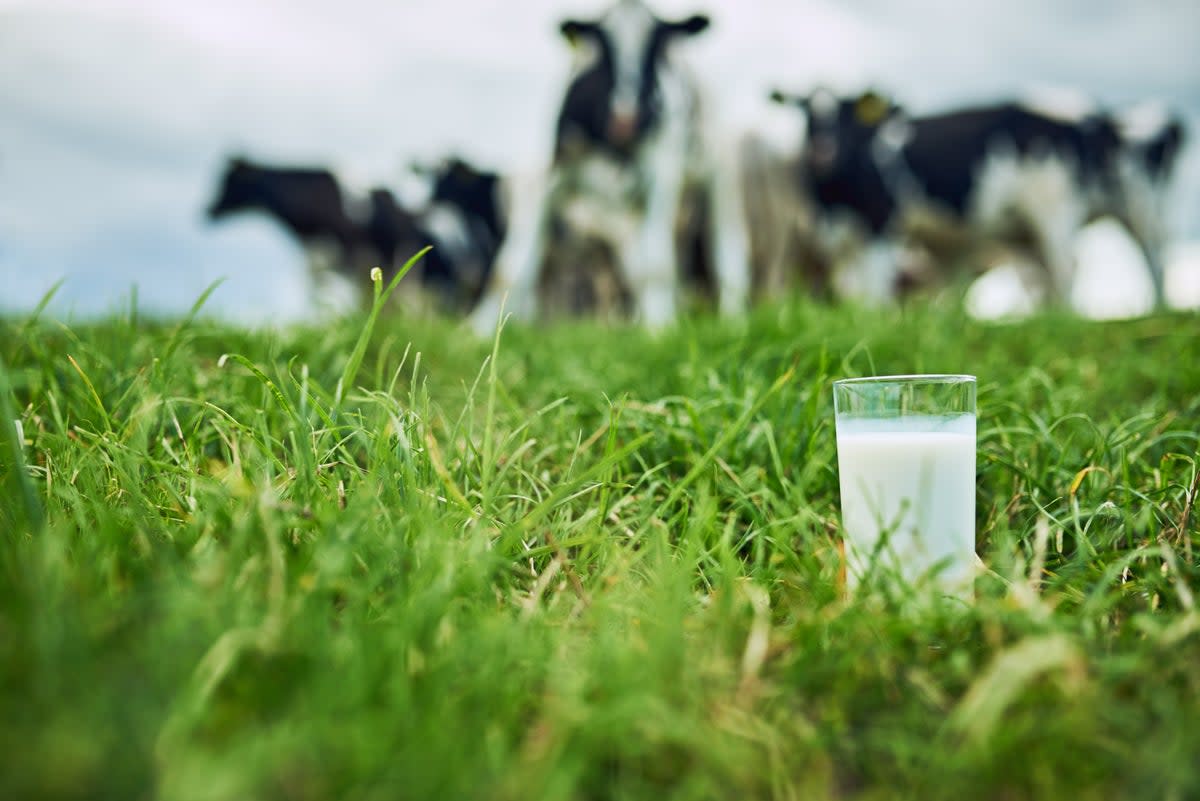Drought and disease exposure led to Europeans adapting to milk consumption, study suggests

Famine and infectious diseases drove early Europeans to develop the ability to consume milk thousands of years before humans evolved the genetic trait enabling lactose digestion as adults, new research has found.
Milk contains the sugar lactose, and if humans don’t digest it, the molecule can cause cramps, diarrhoea, and flatulence in the large intestine – a condition known as lactose intolerance.
Most European adults in the modern world can drink milk without discomfort. However, two thirds of adults today, and almost all adults 5,000 years ago, are prone to face problems if they consumed too much milk.
While until now it was thought lactose tolerance emerged as it allowed people to consume more milk, scientists behind the new study say famine and exposure to infectious diseases best explain the evolution of this ability in humans to consume dairy products.
The landmark study, published on Wednesday in the journal Nature, mapped pre-historic patterns of milk use over the last 9,000 years.
“To digest lactose we need to produce the enzyme lactase in our gut. Almost all babies produce lactase, but in the majority of people globally that production declines rapidly between weaning and adolescence,” study co-author George Davey Smith from the University of Bristol in the UK explained.
“However, a genetic trait called lactase persistence has evolved multiple times over the last 10,000 years and spread in various milk-drinking populations in Europe, central and southern Asia, the Middle East and Africa. Today, around one third of adults in the world are lactase persistent,” Dr Davey Smith said.
In the study, scientists assessed ancient DNA, radiocarbon, and archaeological data using new computer modelling techniques to show that lactase persistence genetic trait was not common until around 1,000 BC, nearly 4,000 years after it was first detected around 4,700BC to 4,600 BC.
MILK TIME 🥛! Have you ever considered that it’s a bit weird that you drink the milk of another animal, and it’s totally normal? Milk is a billion-dollar industry.
A *HUGE* new human evolution paper just dropped, upending one of the great modern evolutionary ideas. 🧵 1/n pic.twitter.com/3zWV7U7t0F— Dr Adam Rutherford (@AdamRutherford) July 27, 2022
They say the lactase persistence genetic variant was pushed to high frequency by a kind of “turbocharged” natural selection, one of the mechanisms that drive species evolution by adaptation.
“The problem is, such strong natural selection is hard to explain,” Mark Thomas, another study co-author from University College London said.
To study this evolution, researchers assembled an unprecedented database of nearly 7,000 organic animal fat residues from 13,181 fragments of pottery from 554 archaeological sites to find out where and when people were consuming milk.
The analysis revealed that milk was used extensively in European prehistory, dating from the earliest farming nearly 9,000 years ago, but increased and decreased in different regions at different times.
Researchers also assembled a database of the presence or absence of the lactase persistence genetic variant using published ancient DNA sequences from more than 1,700 prehistoric European and Asian individuals.
They first saw the trait after about 5,000 years ago, and by 3,000 years ago, scientists say it was at appreciable frequencies, with the variant being very common today.
When researchers analysed how well changes in milk use over time explain the natural selection for lactase persistence, they could not find any relationship.
RESULTS
* It turns out that milk consumption was common for thousands of years *before* the LP gene spread significantly: so selection of this gene is unlikely to be due to its positive effects because it allowed individuals to consume more milk.
13/n pic.twitter.com/2lfJtwJscB— Dr Adam Rutherford (@AdamRutherford) July 27, 2022
This challenges the long-held view that the extent of milk use drove lactase persistence evolution, scientists say.
“Our findings show milk use was widespread in Europe for at least 9,000 years, and healthy humans, even those who are not lactase persistent, could happily consume milk without getting ill,” Dr Davey Smith said.
However, he said drinking milk in lactase non-persistent individuals can lead to a high concentration of lactose in the intestine, which can draw fluid into the colon, and result in dehydration when combined with diarrhoeal disease.
* It wasn’t milk use that drove the spread of LP. Instead, it looks like threats of famine, and infectious agents statistically explain where and when the LP gene took off. pic.twitter.com/wX8fIwtzGN
— Dr Adam Rutherford (@AdamRutherford) July 27, 2022
“If you are healthy and lactase non-persistent, and you drink lots of milk, you may experience some discomfort, but you not going to die of it. However, if you are severely malnourished and have diarrhoea, then you’ve got life-threatening problems,” the scientist explained.
“When their crops failed, prehistoric people would have been more likely to consume unfermented high-lactose milk – exactly when they shouldn’t.”
When scientists applied indicators of past famine and pathogen exposure to their analysis, they found that their results clearly supported their explanations.
In malnourished people, lactose-induced diarrhoea can shift from not being evident or at most an inconvenience to a fatal condition rapidly, what the authors call a ‘crisis mechanism’. The same goes for pathogen exposure as a ‘chronic mechanism’ 17/n
— Dr Adam Rutherford (@AdamRutherford) July 27, 2022
“Our study demonstrates how, in later prehistory, as populations and settlement sizes grew, human health would have been increasingly impacted by poor sanitation and increasing diarrhoeal diseases, especially those of animal origin,” scientists explained.
“Under these conditions consuming milk would have resulted in increasing death rates, with individuals lacking lactase persistence being especially vulnerable,” they said.
The situation, researchers say, would have been further exacerbated under famine conditions, when disease and malnutrition rates increased – leading to individuals without a copy of the lactase persistence gene variant being more likely to die earlier.
“It seems the same factors that influence human mortality today drove the evolution of this amazing gene through prehistory,” researchers concluded.


